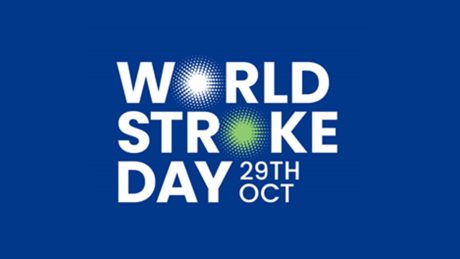A stroke can happen to anyone, anywhere, at any time. The World Stroke Organization suggests stroke is the second leading cause of death and a leading cause of disability worldwide, but many strokes could be prevented. Action taken within minutes can save lives.
Nadia Krueger-Young and Shannon Maude explain why this awareness day is needed.
What is World Stroke Day?
World Stroke Day takes place on 29 October every year.
This global awareness day was established by the World Stroke Organization (WSO) in 2006. It provides a global platform to increase awareness of the serious threat and high rates of stroke, and discuss how we can do better in future through greater public awareness of the risk factors and signs of a stroke. World Stroke Day is also an opportunity to advocate for action by decision makers around the world to improve stroke prevention, improve access to acute treatment and enhance support for survivors and caregivers.
Stroke has already reached epidemic proportions. Globally, one in four adults over the age of 25 will have a stroke in their lifetime. This year alone over 13 million people will have a stroke for the first time and approximately 5.5 million will die as a result. Without appropriate action, current trends suggest that the number of annual deaths will soon climb to 6.7 million.
In 2021 and 2022, the World Stroke Day #Precioustime campaign will focus on raising awareness of the signs of stroke and the need for timely access to quality stroke treatment as well as recognising and treating the warning signs of stroke so that its devastating consequences can be prevented.
What is a stroke?
The World Stroke Organization explains: “Stroke is a condition where the blood supply to the brain is disrupted, resulting in oxygen starvation, brain damage and loss of function.”
There are two main types of stroke, ischemic and haemorrhagic. Ischemic strokes occur when a blood vessel supplying blood to the brain is obstructed. These account for around 85% of all strokes. Haemorrhagic strokes happen when a weakened blood vessel ruptures and bleeds into the brain.
The severity of a stroke can vary depending on which part of the brain is affected, the extent of the damage and how quickly it is treated. As a result, the impact of a stroke can be both short and long-term. Many stroke survivors face significant challenges that include physical disability, communication difficulties, changes in how they think and feel, and loss of work, income and social networks.
Act F.A.S.T.
Fast access to treatment saves lives and improves recovery. If you spot the signs of stroke, call an ambulance immediately and say the word ‘stroke’.
The main symptoms of stroke and the appropriate response can be remembered and checked with the acronym F.A.S.T.
- Face – is the face drooping to one side or is it numb? Ask the person to smile. Is the person’s smile uneven?
- Arm – is there a weakness or numbness in one arm? Ask the person to raise both arms. Does one arm drift downward?
- Speech – is speech slurred or garbled? Ask the person to repeat a simple sentence such as ‘the sky is blue’. Is the person unable to speak or hard to understand?
- Time – if the person shows any of these symptoms, even if the symptoms go away, call the emergency services and get them to hospital immediately.
Transient Ischemic Attack (TIA or ‘mini-stroke’)
A TIA is a major warning and may signal a full-blown stroke ahead. It is crucial that TIAs are treated promptly to avoid a full stroke and permanent disability.
A TIA is often known as a mini-stroke. This is a temporary disruption of blood flow to the brain and the clot usually dissolves on its own or gets dislodged. In the early stages of a TIA the symptoms pass quickly, often within five minutes, and are usually fully resolved within 24 hours. Transient ischemic attacks are often ignored because the symptoms disappear quickly, but it is vital to seek medical attention to avoid suffering a full-blown stroke.
Silent strokes and strokes falling outside the F.A.S.T. test
While the symptoms in the F.A.S.T. test identify most strokes, different symptoms can indicate a stroke. Examples include:
- Sudden loss or blurring of vision
- Dizziness
- Confusion
- Difficulty understanding what others are saying
- Problems with balance and co-ordination
- Difficulty swallowing
- A sudden and very severe headache resulting in a blinding pain
- Loss of consciousness
If any such symptoms arise, it is important to seek urgent medical attention.
Stewarts advises clients on potential clinical negligence claims arising from missed transient ischaemic attacks. For more information, please get in touch.
You can find further information regarding our expertise, experience and team on our Clinical Negligence pages.
If you require assistance from our team, please contact us.
Subscribe – In order to receive our news straight to your inbox, subscribe here. Our newsletters are sent no more than once a month.





